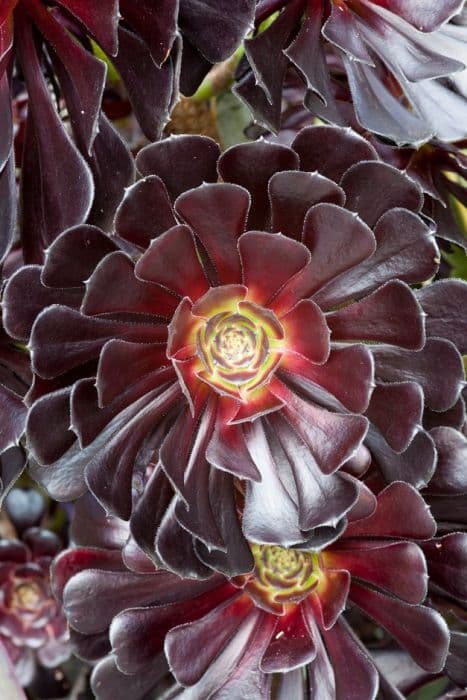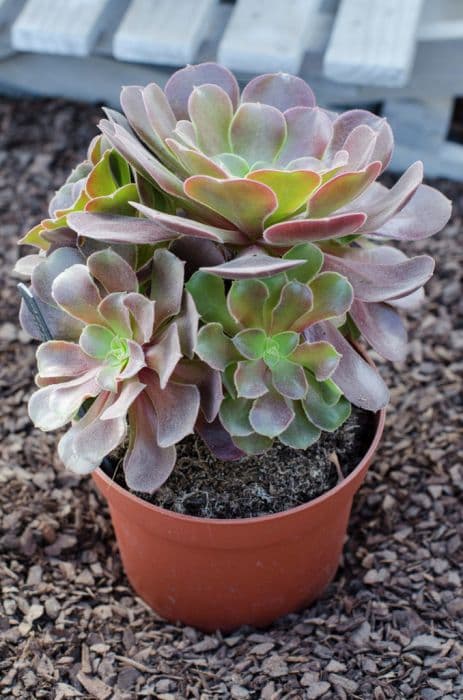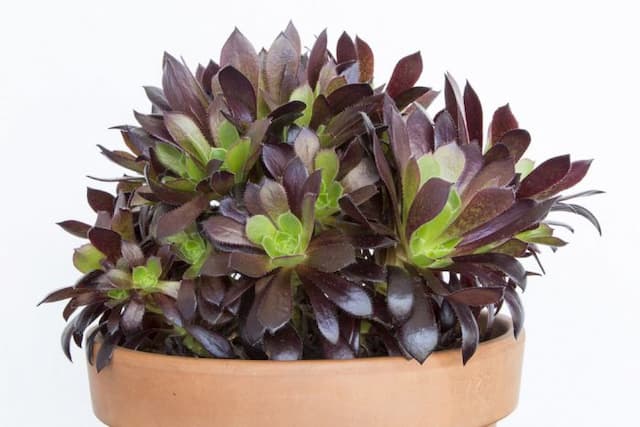Rose root Rhodiola rosea

ABOUT
Rhodiola rosea, commonly known as golden root, is a perennial plant with a fleshy rootstock, which often takes on a distinct, rose-like aroma when cut. This appealing scent has contributed significantly to its common name. The leaves of golden root are fleshy and grow spirally arranged around the stem, with a bluish-green hue that provides a soothing visual. They are elliptical to oblong in shape, focusing their presence towards the base of the stem. This plant produces flowers that create an attractive display. The flowers are small, unisexual (meaning there are separate male and female flowers), and typically yellow to greenish-yellow in color. They are grouped in terminal inflorescences at the top of the stems. When the flowers bloom, they can impart a bright, welcoming spot of color in their natural habitats. The stems of golden root are stout and can range in color from green to reddish-brown, creating a robust appearance that stands in contrast to the delicate flowers. These stems, sometimes tinged with a reddish hue, rise above the foliage and bear the weight of the flower clusters, giving the plant an organized structure that's appealing in garden settings. In summary, golden root has a sturdy appearance with bluish-green leaves gathered at the base, reddish stems, and small, eye-catching yellowish flowers that can brighten the landscape when in bloom. Its notable rose-scented root adds an additional sensory dimension to this attractive plant.
About this plant
 Names
NamesFamily
Crassulaceae
Synonyms
Golden Root, Rose Root, Roseroot, Arctic Root, King's Crown, Orpin Rose, Aaron's Rod, Rhodiola
Common names
Sedum rosea, Rhodiola roanensis, Sedum rhodiola, Rhodiola iremelica, Rhodiola arctica, Rhodiola quadrifida, Rhodiola scopolii, Rhodiola rosea subsp. arctica, Rhodiola rosea subsp. roanensis.
 Toxicity
ToxicityTo humans
Rhodiola, also known as Rhodiola rosea, is generally considered safe for human consumption when used appropriately. It is commonly used as a dietary supplement for its adaptogenic properties. However, consuming high quantities or using it in a way that is not recommended could potentially lead to side effects. These could include irritability, insomnia, anxiety, increased blood pressure, and hypersalivation. Overuse might also cause dizziness and dry mouth. It is important to follow recommended dosages and consult with a healthcare provider before using Rhodiola supplements, particularly if you have any underlying health conditions or are taking other medications.
To pets
Rhodiola is not commonly reported to be toxic to pets. However, as it is not typically used for animal treatments, and considering pets have different metabolisms and sensitivities, it would be prudent to avoid giving Rhodiola to pets without veterinary guidance. In the event that a pet does ingest Rhodiola, it is best to observe the animal for any signs of adverse effects such as gastrointestinal upset, changes in behavior, or other unusual symptoms, and contact a veterinarian if any concerns arise. It is always recommended to keep any dietary supplements or medicinal plants out of reach of pets to prevent accidental ingestion.
 Characteristics
CharacteristicsLife cycle
Perennials
Foliage type
Deciduous
Color of leaves
Green
Flower color
Yellow
Height
1 feet 4 inches (40 cm)
Spread
1 feet (30 cm)
Plant type
Herb
Hardiness zones
3
Native area
Arctic Siberia
Benefits
 General Benefits
General Benefits- Stress resilience: Rhodiola rosea, commonly known as golden root, is believed to help the body adapt to stress by balancing stress-response systems.
- Physical endurance: Golden root may enhance physical performance and reduce fatigue, making it popular among athletes and individuals with physically demanding lifestyles.
- Cognitive function: The herb is thought to support cognitive abilities, such as memory, attention, and mental clarity, under stressful conditions.
- Mood regulation: Golden root has compounds that may affect mood-regulating chemicals in the brain, potentially helping to alleviate mild depression and mood swings.
- Energy metabolism: It is said that golden root can influence energy production at the cellular level, possibly leading to increased vitality and energy.
 Medical Properties
Medical Properties- Adaptogenic effects: Rhodiola is known for its ability to increase resistance to stress by balancing the body’s stress-response system.
- Antifatigue properties: Studies suggest Rhodiola may help combat fatigue and improve physical and mental performance.
- Antidepressant potential: Rhodiola has been explored for its potential to alleviate symptoms of depression.
- Anxiolytic effects: It may help reduce anxiety due to its potential influence on neurotransmitters and stress hormones.
- Cognitive function: Rhodiola may support cognitive functions such as memory, attention, and learning.
- Cardioprotective qualities: There is some evidence that Rhodiola can exert protective effects on the heart, potentially reducing the risk of cardiovascular disease.
- Antioxidant properties: The plant contains compounds with antioxidant activity, which can help protect cells from oxidative damage.
- Immune modulation: It may have immune modulating effects that could enhance the body’s resistance to infections and disease.
- Anti-inflammatory effects: Compounds in Rhodiola might help reduce inflammation in the body.
- Endurance enhancement: Some research suggests that it could improve physical endurance and reduce recovery time after strenuous exercise.
 Air-purifying Qualities
Air-purifying QualitiesThis plant is not specifically known for air purifying qualities.
 Other Uses
Other Uses- Rhodiola rosea can be used as a natural dye, offering a range of colors from yellow to reddish brown depending on the mordant used.
- The succulent leaves of Rhodiola rosea are sometimes added to salads in Siberia for their crisp texture and slightly bitter taste.
- In some regions, the plant is used as a decorative element in rock gardens, thanks to its attractive foliage and stress resistance.
- The extract from Rhodiola rosea is utilized in certain cosmetic products for its potential skin-conditioning properties.
- Some artisans incorporate the dried roots of Rhodiola rosea into potpourris for their subtle fragrance and preservative qualities.
- Cultures in cold regions have used the powdered form of Rhodiola rosea as a natural preservative for meat due to its antimicrobial properties.
- Rhodiola rosea has been used in traditional handicrafts, where the roots are carved into small trinkets and amulets.
- In cooler climates, Rhodiola rosea is grown for its ability to withstand harsh conditions, making it useful for erosion control.
- The plant sometimes serves as a natural insect repellent when grown in gardens or kept indoors.
- Rhodiola rosea is utilized in the flavoring industry to add a unique note to certain artisanal liqueurs and spirits.
Interesting Facts
 Feng Shui
Feng ShuiRhodiola is not used in Feng Shui practice.
 Zodiac Sign Compitability
Zodiac Sign CompitabilityRhodiola is not used in astrology practice.
 Plant Symbolism
Plant Symbolism- Resilience: Rhodiola rosea, also known as golden root, is known for its ability to withstand cold and harsh conditions, symbolizing the strength and resilience to cope with life's challenges.
- Stress relief: As an adaptogen, golden root is believed to help the body resist physical, chemical, and biological stress, hence representing the power to overcome stress and maintain balance.
- Vitality: Golden root is thought to increase energy, stamina, and endurance, making it a symbol for vitality and improved physical performance.
- Longevity: Due to its potential health benefits and association with decreasing fatigue, golden root is often symbolic of a long and healthy life.
- Mental clarity: The plant is reputed to enhance cognitive functions, such as memory and focus, thus symbolizing mental clarity and improved intellect.
 Water
WaterGolden root, commonly known as Rhodiola rosea, should be watered thoroughly when the top inch of soil feels dry to the touch; this typically equates to watering once every week or two, depending on the humidity and temperature conditions. It’s important to use well-draining soil to prevent water-logging. When watering, add water slowly until it begins to run out of the bottom of the pot, ensuring the roots receive adequate moisture without becoming waterlogged. The amount of water may vary, but generally, using about 8-16 ounces per watering session should suffice for a standard pot size.
 Light
LightGolden root prefers bright, indirect sunlight and should be placed in a location where it can receive plenty of light without being exposed to harsh direct sun, which can scorch its leaves. A spot near a window with a sheer curtain is often ideal to provide the appropriate light conditions for this robust plant.
 Temperature
TemperatureGolden root thrives in cooler conditions and can tolerate a wide range of temperatures from around 40 to 70 degrees Fahrenheit. It's important to avoid temperatures above 70 degrees Fahrenheit as this can stress the plant. Rhodiola rosea is quite hardy and can survive temporary dips below freezing, but it's best to keep it within the ideal range for optimal growth.
 Pruning
PruningPruning Golden root is primarily done to remove dead or yellowing leaves and to shape the plant for a more aesthetically pleasing appearance. It should be pruned in the early spring before new growth begins. Pruning once a year suffices, and the plant can be cut back by about a third if necessary to encourage bushier growth.
 Cleaning
CleaningAs needed
 Soil
SoilRhodiola, commonly known as roseroot, thrives in well-draining soil with a pH range of 5.5 to 7. A mix of sand, peat, and regular garden soil in equal parts is ideal. Avoid waterlogged conditions to prevent root rot.
 Repotting
RepottingRoseroot should be repotted every 2 to 3 years. The best time for repotting is in the spring. Select a container that allows ample room for growth.
 Humidity & Misting
Humidity & MistingRoseroot prefers a dry atmosphere and is tolerant of low humidity levels, making it suitable for most indoor environments.
 Suitable locations
Suitable locationsIndoor
Place roseroot in bright light with good airflow.
Outdoor
Plant in full sun to partial shade in well-drained soil.
Hardiness zone
3-8 USDA
 Life cycle
Life cycleRhodiola rosea, commonly known as golden root or roseroot, begins its life as a seed, which germinates in a cold and moist environment after undergoing stratification. It develops into a small rosette of leaves close to the ground in its first year, focusing energy on establishing a strong root system. As a perennial, it enters a phase of vegetative growth in subsequent years, during which it produces more leaves and a robust stem, and can survive through harsh winters. Once mature, Rhodiola rosea produces inflorescences, small yellow or green flowers that are usually dioecious, meaning individual plants may produce either male or female flowers. Following pollination, often through insect activity, fertilized flowers develop into small, multiple-seeded fruit. Over time, the plant may also propagate vegetatively through offsets, creating new plants nearby.
 Propogation
PropogationPropogation time
Spring to early summer
Rhodiola rosea, commonly known as Golden Root or Roseroot, can be propagated through division, which is the most popular method. This technique is ideally undertaken in the spring when the plant is emerging from dormancy and the soil is workable. To propagate by division, the gardener would carefully dig up an established Rhodiola rosea plant, ensuring a generous amount of roots are included. They then split the plant into smaller sections, each with several shoots and a portion of the root system. These divisions are immediately replanted in well-draining soil at the same depth they were originally growing. It is crucial to water the newly transplanted divisions gently yet thoroughly to help establish them in their new locations.









